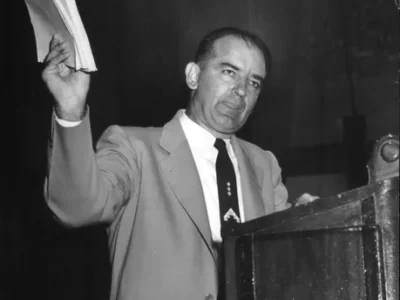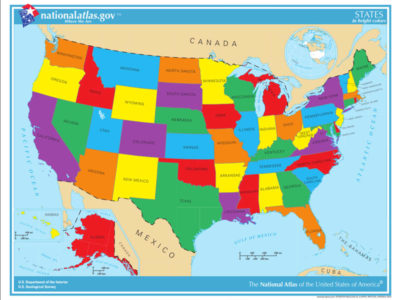EPA and the Social Cost of Carbon: Part II
This is Part II of a two-part series of posts discussing Eric Posner’s critiques of the role of cost-benefit analysis in climate regulation.
 In Part I of this post series, Rhead described the social cost of carbon concept, discussed the Office of Management and Budget’s (OMB) recently updated social cost of carbon estimate of $38 per metric ton of carbon dioxide emissions, and analyzed Eric Posner’s recent Slate piece critiquing OMB’s estimate.
In Part I of this post series, Rhead described the social cost of carbon concept, discussed the Office of Management and Budget’s (OMB) recently updated social cost of carbon estimate of $38 per metric ton of carbon dioxide emissions, and analyzed Eric Posner’s recent Slate piece critiquing OMB’s estimate.
Here, I dig deeper into Posner’s critiques through a discussion of his 2010 paper, Climate Regulation and the Limits of Cost-Benefit Analysis (with Jonathan Masur).
In his Slate piece, Posner posits that it will be difficult for EPA to defend OMB’s social cost of carbon estimate against legal challenge because the estimate is based on crude economic modeling and normative decisionmaking. Posner worries over the fact that EPA’s impending carbon dioxide emissions regulations must incorporate the social cost of carbon estimate into required “Regulatory Impact Analyses” (i.e., cost benefit analyses), as mandated by Executive Order 12,866, thus rendering the regulations vulnerable to legal challenges from industry. (See Part I for a more in-depth summary of Posner’s critiques.)
In response, Rhead argued that there are reasons to doubt Posner’s conclusions about the social cost of carbon estimate. Rhead postulated that courts broadly defer to agencies in technical matters characterized by broad scientific uncertainty (such as calculating the social cost of carbon), and regardless, the social cost of carbon estimate is not necessary to justify carbon dioxide emissions regulations under Clean Air Act § 111.
In Climate Regulation and the Limits of Cost-Benefit Analysis, Posner provides further support for his broad thesis that formulaic cost-benefit analyses are the wrong tools for normative/political challenges like climate change. He and Masur argue that the primary problem is that, in practice, agencies face two serious problems in calculating the social cost of carbon. First, climate change impacts are unpredictable, and the three major global climate models (DICE, PAGE, and FUND) are crude, inconsistent, ignore leakage, neglect catastrophic risks, and require lots of assumptions. In short, Posner and Masur point out some serious technical methodology problems (all of which modelers, economists, and OMB have long acknowledged). In Posner’s own words,
[T]here is tremendous uncertainty about which human beings will be harmed, and where, and how much, and what weight those harms should have in the cost-benefit calculation. In the absence of this information, agencies cannot conduct proper cost-benefit analyses.
Second, Posner and Masur argue that “[i]nternational relations pose inescapable political questions, which cost-benefit analysis cannot resolve.” For instance, calculating the social cost of carbon requires the agency to select a discount rate and decide whether to consider only domestic US beneficiaries or the entire world community. In other words, the agency calculating the social cost of carbon must make political/normative decisions about how to valuate costs and benefits to the global community and future generations.
According to Posner and Masur, technical barriers can be overcome in time, but “[t]he more serious problem for cost-benefit analysis of climate change is that climate regulation requires a series of judgments that are political and institutional rather than technical.” Indeed, for Posner and Masur, it is mainly the normative decisionmaking that renders cost-benefit analysis an inappropriate tool for the climate change problem.
It is clear that the costs and benefits of climate regulation are of great importance, and that economic analysis will have to play a role in climate regulation. But we argue that the formulaic approach to weighing costs and benefits that is embodied in the standard methods used by regulatory agencies is not appropriate for this problem.
Instead, Posner suggests that a “more honest and plausible approach” would involve Congress selecting a social cost of carbon and making the necessary political judgments about uncertainty, foreign policy, future generations, etc. Alternatively, Posner encourages President Obama to suspend the cost-benefit analysis requirement of Executive Order 12,866 for climate regulations and initiate a notice-and-comment rulemaking process to address the political questions involved in calculating a social cost of carbon.
Posner’s recommendation that Executive Order 12,866 should be suspended for climate regulations is interesting; certainly, in the absence of suspension, the Order could put EPA in the easy-to-sue position of either not using the social cost of carbon or using a social cost of carbon that includes political/normative assumptions. Nonetheless, I agree with Rhead that Posner likely overstates the legal vulnerability of the EPA. If plaintiffs sued EPA for not using the social cost of carbon in its cost-benefit analysis for climate regulations, EPA simply could go back and include the social cost of carbon. If plaintiffs later sued EPA for the assumptions in the social cost of carbon, the agency, with deference, likely could defend its normative assumptions from challenge, as well as successfully justify the results of the global climate models (as EPA did in Massachusetts v. EPA and the greenhouse gas rulemaking cases before the D.C. Circuit). Also, it seems to me that plaintiffs would opt to rely on other, less technical challenges if they truly sought to halt (rather than simply delay) climate regulations. Although Posner’s concerns could constitute one argument in a longer list of challenges, challenging the agency’s use of the social cost of carbon in a regulatory impact analysis does not seem anything like a winning argument for plaintiffs.
Legal risk aside, and despite the fact that it is not a novel observation, Posner is correct in pointing out that unelected EPA regulators now are in position to make some decisions with weighty political implications. One might argue that agencies regularly engage in the process of political/normative decisionmaking, but I agree to some extent with Posner that climate change is distinct from most other environmental policy problems in scale, impact, and scope. One also could point out, though, that Congress had an opportunity to regulate climate and repeatedly dropped the ball. EPA certainly did not seek to usurp the legislature’s role in deciding political questions related to climate change (see, e.g., Mass. v. EPA). Consequently, at this point in the process, Posner’s criticisms seem mostly unproductive.
As a final note, in Part I, Rhead compared the roles of social cost of carbon in a cap-and-trade regulatory scheme versus a carbon tax regulatory scheme, making the argument that a perfect cap-and-trade market would sort out the social cost of carbon without the need for crude economic modeling—to wit, the social cost of carbon could be found in the price at which carbon allowances trade. It should be noted, however, that the political/normative questions cannot be avoided even with a cap-and-trade scheme. Setting emissions caps inevitably requires implicit or explicit cost-benefit analysis regarding the amount and kinds of climate harm we consider acceptable. Significantly, California’s AB 32: The Global Warming Solutions Act of 2006 likely would garner Posner’s approval because the State Legislature—not the Air Resources Board—set the statewide greenhouse gas emissions cap at the equivalent of 1990 emissions levels by 2020.
Reader Comments
3 Replies to “EPA and the Social Cost of Carbon: Part II”
Comments are closed.







Megan,
Totally agree regarding Posner’s legal strategy advice for the Coalition for Responsible Regulation types. Well said. Apparently he hasn’t read Sierra Club v Costle in a while.
But do you really think Posner would be happy with AB 32? On the one hand, it is a legislature acting rather than a regulator. On the other hand, the legislature used its authority to set a cap based on a totally arbitrary focal point – 1990 emissions levels – rather than by attempting to price the externality. Moreover, it then gave ARB carte blanche to regulate in order to accomplish this objective. The language regarding emissions trading barely made it into the bill and was a major sticking point. My guess is that Posner, were he to take a close look at the statute, might not be so kind.
In any case, enjoyed your and Rhead’s post.
Best,
MW
Excellent points, Michael–thank you!
You’re right to point out that I limited my discussion of Posner and AB 32 to the fact that the legislature set the emissions target. I think you’re right that Posner would find the vaguely Kyoto Protocol-based 1990 emissions levels target in AB 32 to be frustratingly arbitrary. The 1990-levels target does not represent the amount of adverse climate impacts CA is willing to tolerate, nor is it optimized based on the cost of reducing emissions by 2020 or other empirical considerations. (And, if Posner seeks purely economically rational decisionmaking, it’s a wonder that he thinks Congress is the right body to determine the SCC. No doubt whatever Congress produced in practice would frustrate economists.)
I’m not sure how Posner would feel about the fact that ARB has such broad regulatory power. I suspect you’re right here, too, to some extent; but at least in the case of AB 32, the CA Legislature explicitly delegated ARB carte blanche authority to regulate greenhouse gases to mitigate climate change. I think that importantly distinguishes GHG regulation by ARB under AB 32 from GHG regulation by EPA under the Clean Air Act.
I welcome Rhead’s thoughts, since I suspect he has something to say about the emissions cap…. Thanks again for your thought-provoking comments, Michael.
See my comment to Part I of these posts. I don’t find the use of a 1990-levels target to be particularly problematic, given the political climate. Scientists tell us with 99%+ probability that we should be decreasing emissions more than 1990-levels to avoid serious climate-related harms. It doesn’t take much economic modeling to know that the benefits of avoiding this type of serious harm outweigh the costs.
More to the point, if the economic benefits of emitting carbon really outweighed the harm, we would know because the price of allowance would skyrocket. With a gradually decreasing cap, we can see how allowance prices react without any of this speculative economic modeling of future harms vs future benefits. Sure, at some point it would be nice to know what we are getting as allowances go to $100, $200, …, but that type of analysis is not necessary to construct a viable, reasonable and non-arbitrary emissions cap-and-trade program.
— Rhead